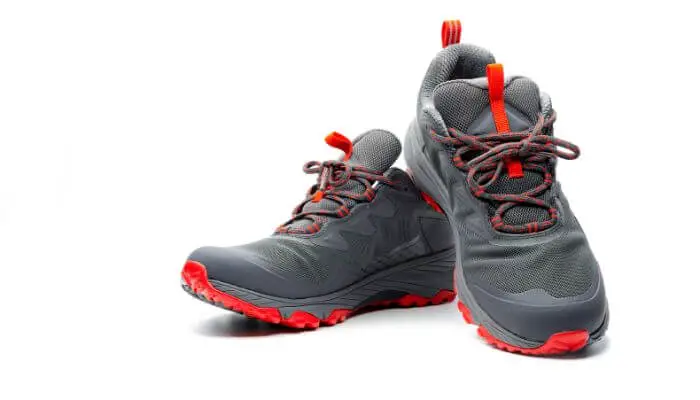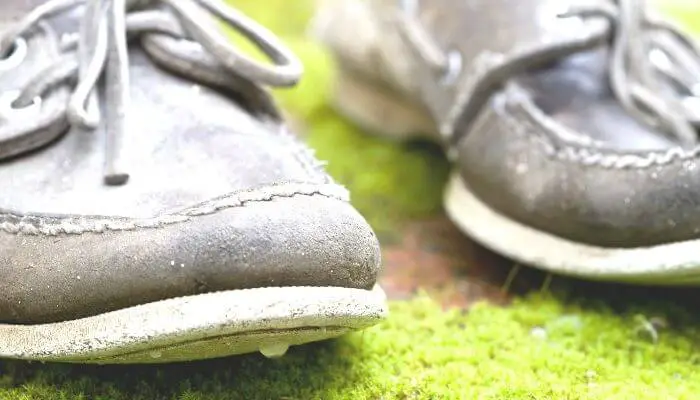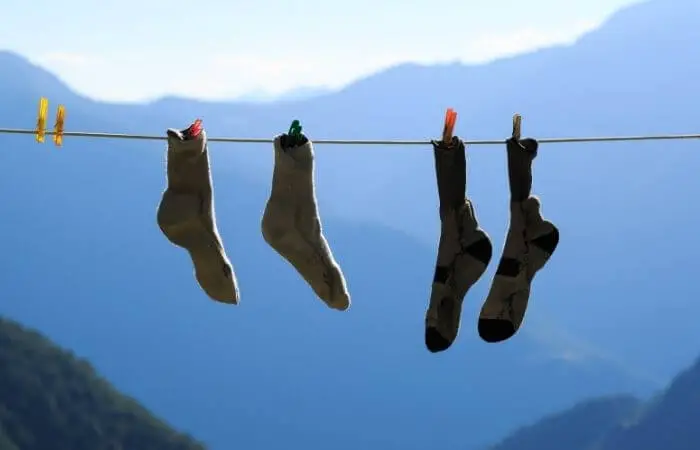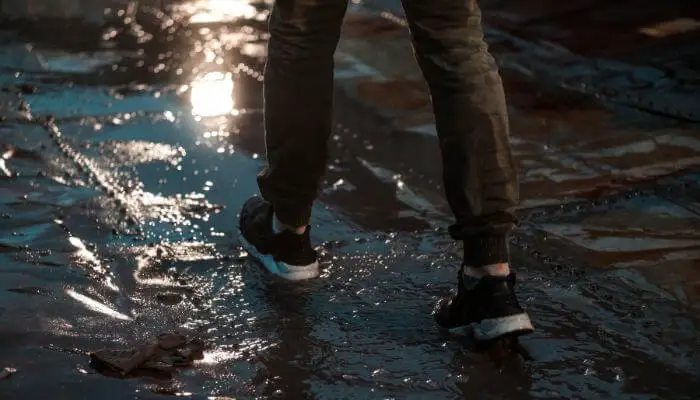With the ever-changing climate, the weather can still be unpredictable, even with forecasts. When it rains out of the blue, it can be hard to walk outdoors without getting your shoes wet, not to mention your feet.
Luckily, we know all about how to keep feet dry in rain, and we’ll discuss seven ways that you can do that right now.
Let’s dive in!
1. Wear Breathable, Waterproof Footwear
There are particular kinds of shoe ideal for rainy weather, and they mostly, if not completely, keep your tootsies nice and dry while outdoors.
We have the ever-reliable rain boots. Their sole purpose is to protect your feet from the rain. The sizes range from up to your ankles to your shins.

On the other hand, materials such as Gore-Tex, leather, and nylon are heavily water-resistant. Shoes made out of these are such good alternatives if you can’t grab a pair of rain boots.
For better results, try to look for the ones made entirely out of one solid piece to limit the chance of leaks.
2. Waterproof Your Shoes
Another effective method is to waterproof your shoes. The way you go about doing this will depend on the type of footwear you have.
That’s because the waterproofing agent will react differently to various materials, so it’s best to check first what type of footwear you want to waterproof.

Before you attempt to waterproof your shoes, remember to thoroughly clean and then fully dry them beforehand since you won’t be able to do that afterward.
For most types of shoes, use the following coat types to treat them:
- Waterproof spray (for specific shoes depending on the kind of spray)
- Beeswax (for suede, leather, canvas, etc. )
- Mink oil (for leather only)
- Petroleum jelly (for temporary and quick fixes)
- WD-40 (as a last resort; it’s not the best for boots or shoes in general)
For sneakers, use these instead:
- Wax (like paraffin wax candles, pure beeswax, or wax beads)
- Waterproof sprays (like acrylic or silicone sprays)
When it comes to sneakers, don’t use hairspray, mink oil, or WD-40. All three tend to discolor and possibly damage your shoes from the first exposure.
3. Carry Spare Shoes
Sometimes, you can’t fully avoid getting your shoes wet, especially when it starts storming pretty bad.
To avoid this, get a spare set of shoes and leave it either in your workplace, in your locker, or even in your car for your convenience.
4. Wear the Right Type of Socks
Typical socks are made out of cotton, but they’re not the best when it rains.
This material absorbs a lot of water, which makes it hard to become dry quickly. Moreover, wet cotton sticks to your body and causes a lot of friction.

Socks made out of wool, on the other hand, can be worn on any day of the year. They’re breathable for the summer and also a great insulator for the winter. Not to mention, wool socks dry a lot faster.
Bring Spare Socks
Like with bringing an extra set of shoes, we can include another set of socks in the mix.
If the seepage went straight through your socks, all the more reason to have a spare after drying them off!
5. Use Shoe Covers
There are shoe covers available online now, and they can be pretty handy to use. Each pair fully covers your shoe while you’re wearing them, from the soles to your ankles.
They’re completely waterproof once you wear them correctly. Plus, you can shop for reusable and disposable variations.
You can also get ones specifically made to keep your feet dry while wearing motorcycle boots and other very specific types of footwear such as cycling shoes and more.
Alternatively, Use Plastic Bags
If you currently can’t use shoe covers, you can DIY some out of plastic bags. You have the option of putting them over your shoes or over your socks before putting on your shoes and securing them with tape.
To make things even more secure, wear another pair of socks over the makeshift shoe covers.
6. Don’t Walk Through Puddles
A really effective way to keep your shoes all nice and dry is to veer away from those patches of water that gather on the ground when it rains.

Yes, maybe fight the urge to jump in a few puddles so that you won’t have to keep drying your shoes and feet for a long time afterward.
Why Wet Feet Are a Problem
There is a real need to take care of your feet because they’re the ones bearing the weight of your entire body every day. Sure, the feeling of your feet getting wet is unpleasant, but keeping them dry is more beneficial for your health than you think.
Below are just some of the conditions that are associated with wet feet:
- Blisters and sores – Those small pockets of fluid that develop on feet can be caused by excessive friction when your feet get wet.
- Athlete’s foot – This is a fungal infection that is mostly seen on the feet of athletes, and it’s contagious.
- Trench foot – It’s a non-freezing cold injury that causes damage to feet when they’re wet for a prolonged period of time.
- Onychomycosis – This is another fungal infection, but it involves the toenails flaking off or crumbling, making it really painful.
- Dyshidrotic eczema (pompholyx) – Wet feet and palms set off the symptoms for this type of eczema.
In Conclusion
Our hardworking feet need a bit of attention every now and again, and knowing how to keep feet dry in rain is just another way for us to take care of them.
The multiple steps we can take range from picking out or buying the right kind of shoes for the weather to waterproofing the shoes you already have.
Each of the tips we mentioned is useful, but your ultimate choice will depend on your situation, the shoes you have, and the availability of the materials.
In any case, you’ll still be ready when the seasons change!

